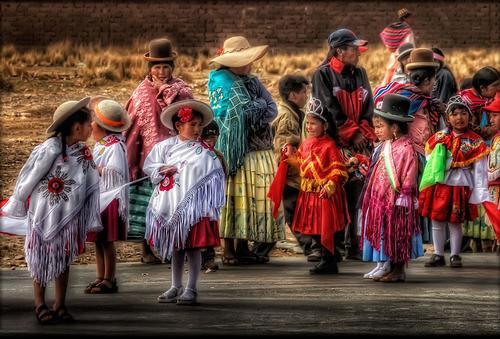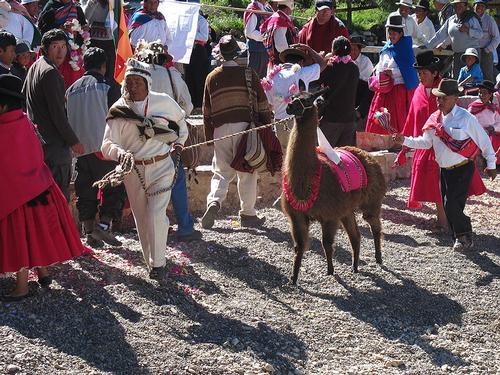BOLIVIA
Population

Population
Population

Bolivia had 12,3 million inhabitants in 2024. On average there are approximately 11 inhabitants per km2. Almost 70% of the population lives in the cities and in the valleys of the Andes Mountains. Approx. 20% of the population consists of Indians, approx. 68% of Mestizos of Indian / White descent, approx. 5% of (mostly Spanish) white descent and approx. 4% are black and Asian descent. The largest cities are La Paz (approx. 1.9 million inhabitants), Santa Cruz (approx. 1.4 million inhabitants) and the capital Sucre (approx. 278,000 inhabitants). A suburb of La Paz, El Alto is Bolivia's fastest growing city. The composition of the population differs from place to place: in La Paz half of the population is Indian and the population of Santa Cruz consists of three quarters of mestizos and Europeans.
The average life expectancy in Bolivia is approximately 72.5 years (2024). 28.5% of the population is under 15 years old; only 7% are 65 or older. Population growth was 1% in 2024.

The Quechua and Aymará Indians are the greatest in number. There are about 2.5 million Quechua and about 2 million Aymará in Bolivia. The Aymará live around Lake Titicaca and around La Paz. The Quechua mainly live in the other parts of the Andes mountains. Many smaller Indian tribes such as the Baures and Moxo Indians live in the lowlands. A well-known tribe are the Guaraní who live in the south of Bolivia. Only about 30,000 Indians live the way they have always lived, the rest are already influenced by Western ways of life. Nomadic groups are threatened by logging, disease and colonization of their habitat. In total there are 32 Indian peoples living in Bolivia.
Until the revolution in 1952, there was strict racial segregation in Bolivia in certain public places and districts. Poverty is greatest among Native Americans in both rural and urban areas, although the growing population of urban Native Americans (cholos) fares significantly better than rural Native Americans. Mestizos often form the middle class and the higher functions are often occupied by the whites. The blacks in Bolivia are descended directly from the slaves brought from Africa centuries ago. Descendants of Japanese immigrants who fled after World War II mainly live in the Santa Cruz department.
Sources
Bijl, Y. van der / Reishandboek Bolivia
Elmar
Lindert, P. van / Bolivia : mensen, politiek, economie, cultuur
Novib
Schimmel, K. / Bolivia
Chelsea House Publishers
Sprey, J. / Bolivia
Gottmer
Te gast in Bolivia
Informatie Verre Reizen
CIA - World Factbook
BBC - Country Profiles
Copyright: Team The World of Info